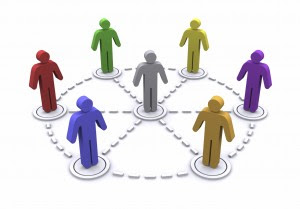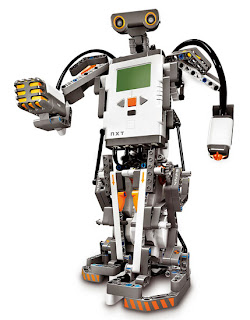My life is teaching
Saturday, August 14, 2010
Monday, July 12, 2010
Post 11 - Reflections
I thought that technology is a powerful tool to close the gaps that our students have in their education. And this course taught me new ways to implement it and use the new equipment.
The whole world or applications for education that exist for the ipod touch platform. I always saw it like a recreational device and now I'm very excited to work with them and share this knowledge with my students.
Tool # 11 - Digital Citizenship
First, "Not everything that is written on the Internet is true" Many of the articles on the Internet are very subjectives, outdated or not true at all. Even worst, some people copy the same information in other sites so you can't count on how many places said the same.
Second, "How respectable is your source of information?" this is very important when researching for projects. If I'm looking for information about the moon, do I trust on NASA, European Space Agency or on the National Enquire?
Third, "What ever you post on the Internet, you have to live with it." Even if you delete a comment or post, it stays on backup copies in sites like youtube, google, or hotmail. So you have to think twice if what you said is inappropriate, can harm others, or yourself.
Tool #10 - ipod apps
Thursday, July 8, 2010
Asking for School Supplies
May I have one of this to use it at our massive new Hollibrook?
That's the real car of the future,1963. 100mpg is better than any 2010 hybrid.
Sunday, June 27, 2010
Tool #9 - Video Training
For example, on a previous post, a teacher asked me about how do I include videos in my posts. I use Jing to record and explain the process. If you want to know the answer to this question, just click on this link:
How to include a YOUTUBE video into your blog.
Saturday, June 26, 2010
Tool #8 - Video
Other times is difficult to get students remember something. But if you find something related to them, like hip-hop, they even remember how to prepare for TAKS test.
Finally some times I use humor to show students that in formal and informal tests, the tester wants to trick them, so they have to be careful, use what they know, and believe in themselves.
Tool #7 - My first multimedia book!
Tool #6 - Teamwork or Wikiwork

While working in this new environment, it will tackle both technology and content area skills. I also expect students to be more focused on the task at hand.
I will have to tighten the security for myself and my students as soon as I have actual student work.
Using this tool, I hope my students will learn to work collaboratively for a common goal.
Friday, June 25, 2010
Tool #5 - Tagging
The two sites I found using Delicious, were Project Gutenberg where you can find free e-books and Librivox that have a huge library of free audio books, this will be useful for my read aloud :). How did I find these sites? I just type to search for tags "Audio books".
Thursday, June 17, 2010
Tool #4 - Google Tools: Real sharing, real collaboration.
I suggest we use this docs to edit, revise and approve road maps and schedules. Also we can use Google Forms to create and balance tutoring lists, planning field trips, and centralize data analysis based on checkpoints, benchmarks and CBQs.
I just imagine how fast students can revise and get feedback of their writing pieces. That will make real the concept of writing to publish.
Finally, it's great to get updates of my 6 teachers blogs subscriptions using Google reader. This tool save me time reading the interesting and useful partners blogs.
Friday, June 11, 2010
Tool #3 - Visual Learning
Exploring these tools was awesome! By example, Spell with Flickr (above) it's very funny and eye catching. I'll certainly use it for titles of projects.
I have been used Wordle to introduce articles or books when I have the electronic copy of the text. I explained to students that the bigger the word the more times is mentioned on the text. Then I asked them "Why is so important in the story a person named Smith?", "Why the word messages is used the same number of times as wireless and iceberg?". This exercise activates the previous knowledge of my students and leads a better comprehension of the story.
Finally, I want to share what our librarian Eleanor McClendon taught to our students Big Huge Labs - Trading Card. With this application the students created trading cards by finding pictures and information from the Internet. This is one example from one of my students: Hope you are enjoying your vacations. I use the following video to teach students to use strategies to face challenges. Also because the World Cup started today!
Hope you are enjoying your vacations. I use the following video to teach students to use strategies to face challenges. Also because the World Cup started today!
Wednesday, June 9, 2010
Tool #2 Professional Learning Networks
 Communication is the key to learn and succeed. My fellow teachers and I, use to share our ideas, flip charts, lessons, links or any resource to increase the education of our students.
Communication is the key to learn and succeed. My fellow teachers and I, use to share our ideas, flip charts, lessons, links or any resource to increase the education of our students.We have been using the e-mail to communicate with each other. That makes me use common expressions like "Did I erase that useful mail?" or "Have you read the urgent mail I sent you 3 week ago?"
Now by posting our ideas in a blog, we not only share an idea with one or two teachers, but with whoever reads our blogs.
A Professional Learning Network would build a real community of learners and our own virtual bank of knowledge.
Following one of the advices for comments, I try to make meaningful comments that add something for the author and followers of that blog. Also we can make comments to improve an idea, figure out a different approach, or implementation. This is a win - win situation!
P.S. I appreciate a lot your time expended on reading this post. Furthermore, I'm eager to read your comments on it.
Pardon if I comment something in a wrong way. I hope did't make fatal errors like this guy :)
Tuesday, June 1, 2010
Tool #1 Use of blogs.

Even I'm a computer engineer, starting this blog was like assembly my lego robot in the middle of the night with the lights turned off. Maybe is also I hate to read manuals :).
But I'm sure I'm going to improve my blogging skills (No Teacher Left Behind!).
Just by making this exercise, I realize this is a very useful tool to develop the creativity of my students and give them the opportunity of practice all they have learned about writing.
For example, I would ask my student to crate a social studies research and publish their results using their own blog.
P.S. This is me learning to blog.





